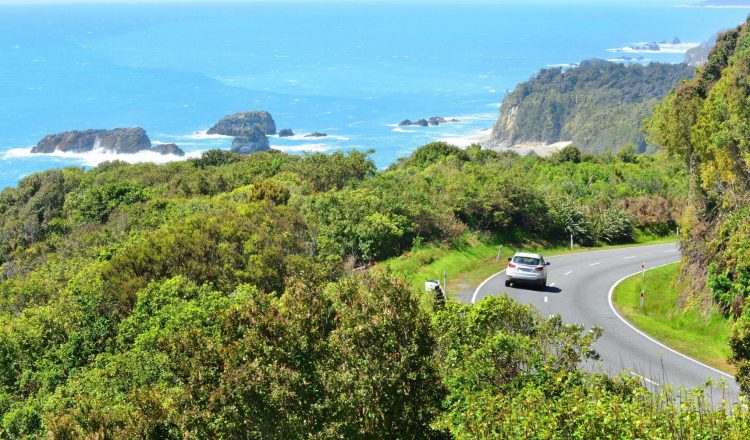도로 공유
자전거와 함께 사용하는 도로
사이클리스트들은 다른 도로 이용자들에 비해 보호 수준이 낮습니다. 그렇기 때문에 자전거가 근처에 지날 때는 주의해서 운전해야 합니다.
자전거를 탄 사람들과 안전하게 도로를 공유하는 팁:
- 지나갈 때는 각별히 주의하고 속도를 줄이세요. 사이클리스트들이 신호를 미처 못주고 갑자기 움직이는 경우가 발생할 수 있습니다.
- 선회 및 정지 시 충분한 시간을 주고 명확하게 신호를 주세요.
- 특히 밴, 트럭 또는 버스를 운전할 때 사각지대를 파악하고 자전거가 주변에 있는지 다시 확인하세요.
- 교차로를 다시 한 번 살펴보세요. 자전거는 다른 차량보다 작으며 쉽게 보이지 않습니다.
- 교차로에서 선회하기 직전에 사이클리스트를 추월하지 마세요.
- 탁 트인 도로에서 자전거 타는 사람들을 지나칠 때 조심하세요. 속도를 줄이고, 자전거와 1.5m의 간격을 두세요.
- 도로변에서 자동차 문을 열 때 백미러를 확인하고 고개를 돌려 살펴보세요.
- 속도가 느려지고 가시성이 저하될 때 주의하십시오. 자전거 타는 사람들은 종종 잘 보이지 않으며, 비가 오거나 조도가 낮은 환경에서 더욱 그렇습니다.
qhgodwk와 함께 사용하는 도로
매년 평균 36명의 보행자가 도로 위에서 사망하고 1,000명의 보행자가 부상을 당합니다. 운전자들이 주행할 때 좀 더 주의를 기울인다면 이러한 사고를 예방할 수 있습니다. 운전대를 잡으실 때는 항상 보행자를 조심하세요.
- 학교, 버스 정류장, 횡단보도 근처에서는 항상 정차할 준비를 하세요.
- 주차된 차량을 지나칠 때 주의하십시오. 보행자는 경고 없이 걸어 나올 수 있습니다.
- 아이들이 타고 내리는 통학버스 쪽으로 통과할 때는 어느 쪽 방향으로 달리든 시속 20km로 속도를 줄여야 합니다.
- 노인이나 장애인에게 주의를 기울여주세요.
- 길가 노점이나 주차된 노점 주변에서 각별히 주의하세요. 무언가를 사고 난 후 보행자들은 길을 건널 때 주벼을 살피는 것을 잊어버리기도 합니다.
횡단 보도는 흰색 줄무늬가 가로로 표시되어 있습니다. 사람들은 걸어서 또는 이동 장치(예: 모터 구동 휠체어 및 유사 장치), 바퀴 달린 장치(예: 스케이트보드 및 스쿠터)을 사용하여 건넙니다.
일부 건널목은 가운데 섬같이 생긴 ‘교통섬’이 있습니다. 이는 중간에서 다차선 도로를 가로질러 갈 때 반대편 차선을 건너기 전 이곳에서 안전하게 서있을 수 있습니다.
횡단보도 쪽으로 차를 몰면 그 앞에 표지판이 보이고 횡단보도에는 검은색과 흰색이 교차로 표시되어 있습니다. 건널목 기둥에는 형광 주황색 원반이나 야광 노란색 조명이 장착되어 있습니다. 일반적으로 횡당보도 진입 전 도로에는 흰색 다이아몬드가 그려져 있으며 흰색 정지선이 정차 위치를 알려줍니다.
횡단 보도와 가까워질 때:
- 속도를 줄이고 건널목에 이미 들어섰거나 막 들어서려는 보행자를 위해 멈출 준비를 합니다 – 횡단보도 앞에서 기다리는 사람도 포함됩니다.
- 건널목 중간에 솟아오른 교통섬이 없다면, 어느쪽 차선을 이용하든 멈춰서서 보행자에게 길을 내주세요.
- 만약 건널목 중간에 교통섬이 있다면, 진행 차선에 있는 보행자들에게 길을 양보하세요.
- 보행자가 차 앞을 지나서 완전히 사라진 후 주행합니다.
트랙터와 함께 사용하는 도로
뉴질랜드 도로에서는 트랙터와 같은 농업 기계, 건설 기계를 쉽게 볼 수 있습니다. 몸집이 크고 다른 차량보다 주행 속도가 느리기 때문에 가까이 운전할 때는 특히 조심해야 한다.
- 앞에 트랙터를 보이는 즉시 속도를 늦추고 주변에 경고 표시가 없는지 주의하세요.
- 트랙터 뒤에서 운전할 때는 인내심을 가지십시오. 10분 먼저 가려다 10년 먼저 갑니다.
- 추월 시 극도로 주의하고 안전하며 합법적인 경우에만 추월하세요.
- 트랙터는 종종 하중이 넓거나 길어서 추월이 어려울 수 있다는 것을 기억하세요.
- 막 멈춘 트랙터는 유턴을 하려는 경우가 있으니 특히 주의하십시오.
트럭, 버스와 함께 사용하는 도로
- 2초 규칙을 기억하세요. 너무 가까이 다가가면 시야가 제한되고 안전 거리가 줄어들며 트럭이나 버스 운전자의 사각지대에 놓이게 됩니다.
- 습한 날씨에는 거리를 4초로 늘립니다. 이렇게 하면 가시성을 떨어뜨릴 수 있는 버스나 트럭의 바퀴에서 물이 분사되는 것을 방지할 수 있을 뿐만 아니라 제동 거리도 더 많이 확보할 수 있습니다.
- 버스와 트럭 운전자는 차량 뒤쪽과 옆쪽에 사각지대가 큰 경우가 많으므로 사이드미러에 차량이 보이도록 충분한 거리를 유지하는 것이 좋습니다. 이렇게 하면 트럭, 버스 운전사가 뒤차가 있다는 것을 인지할 수 있습니다.
트럭, 버스를 추월할 때
일반 차량을 추월할 때보다 트럭이나 버스를 추월할 때에는 몇 초 정도 더 걸리기 때문에 제한속도를 넘기지 않으면서 안전하게 추월할 수 있도록 앞이 훤히 트여 있는 도로에서 시도하세요.
반대차선의 트럭과 버스:
마주 오는 트럭이나 버스를 지날 때 운전자는 난류의 영향을 덜 받도록 스티어링 휠을 단단히 제어해야 합니다. 특히 대형 차량은 커브길과 교차로를 주행할 때 더 많은 공간을 차지하며 차선을 침범할 수 있다는 점을 기억하세요.

















































